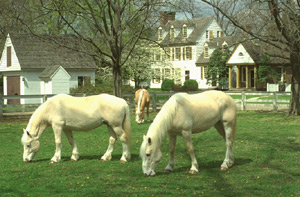
American Cream Draft Horses
~~~
Colonial Williamsburg’s Rare Breeds program was begun in 1986 to preserve genetic diversity in livestock.
Some of the selected breeds represent animals that could have been present in Williamsburg during the 18th century according to historical research.
Rare is defined as having fewer than 1,000 animals registered annually in North America.
The breeds in the foundation’s program –American Cream Draft horses, the Leicester Longwool sheep and America Milking Red Devons – have fewer than 200 animals registered annually in North America. Also included are the Canadian horses.
~~~
The American Cream Draft Horse
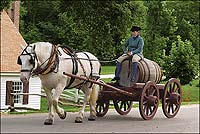
The only modern breed in the program also is the rarest – just over 500 still exist in North America. American Cream Draft horses are the only breed of draft horse originating from the United States and are now bred here.
Breed characteristics include a medium cream-colored coat, pink skin, amber eyes, long, white mane and tail and white markings. These horses mature late at five years old and have an excellent temperament.
Mares stand from 15 to 16 hands and weigh 1,500 to 1,600 pounds. Males stand 16 to 16.3 hands and weigh 1,800 pounds and up.
American Creams pull wagons and carriages throughout Colonial Williamsburg’s Historic Area.
Canadian Horses
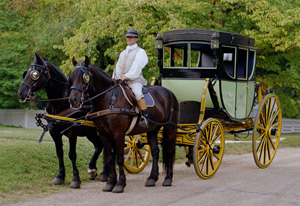
Colonial Williamsburg’s most recent addition to the Rare Breeds program, Canadian horses were developed from horses sent from France to Quebec between 1665 and 1670.
They stand 14 to 16 hands. Mares weigh 900 to 1,300 pounds and males weigh 1,000 to 1,400 pounds. Canadians were used for farm work, transport, riding and racing.
Canadian horses are solid and well-muscled with a well-arched neck set high on a long, sloping shoulder. Canadians are primarily black or reddish brown with full manes and tails. They are energetic without being nervous and are adaptable for a variety of riding and driving disciplines.
Originally imported from Canada, Canadian horses now are bred in Colonial Williamsburg
Leicester Longwool Sheep

A long, healthy, lustrous coat which falls in ringlets, ease of feeding, valuable meat supply and quick maturation are the sheep’s breed traits. Leicester (pronounced “lester”) Longwools originated in Britain and were used as a pioneer breed.
Their use extended to America, Australia, New Zealand and other colonies settled by the Crown.
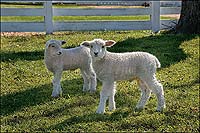
Today they are quite rare in Britain and North America, but they can still be imported from Australia. Their wool is sold to hand spinners, weavers, felters and dollmakers for hair and beards.
The original herd of Colonial Williamsburg’s Leicester Longwool sheep came from Tasmania, but now the sheep are bred here.
Milking Shorthorn and Randall Oxen
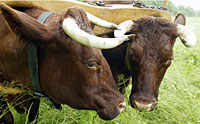
Trucks, tractors and bulldozers of the 18th century; oxen are cattle trained to work. In Colonial Williamsburg’s Historic Area, there are two breeds: Milking Shorthorns and Randalls.
Milking Shorthorns originated in England, can be red or white, and are used for milk, meat, and work.
Randalls were bred in a closed herd by a Vermont family of the same name for 80 years. They are also called linebacks, due to the white line that runs down their backs.
Both breeds are rare, classified as a watch breed and a critical breed, respectively. Oxen Emmitt, Gage, Rusty, Red, Bart, Bud, Timer and Tuck can be found working in Colonial Williamsburg’s Historic Area and at Great Hopes Plantation.
American Milking Red Devons
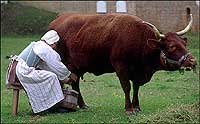
Diversity is the trademark of this breed. Their milk contains a high butterfat content – prized in the 18th century for butter and cheese production.
They are very intelligent and are good work animals that are easy to feed. Their milk is used in the Historic Area Foodways program.
Descended from the Red Devon breed native to Devonshire, England, American Milking Devons now are bred here.
Story Link: Colonial Williamsburg Rare Breeds

Hello,
I work with the extremely rare Marwari Horses from Rajasthan, India. There are currently only 10 in America- 2 mares that we have on loan to the Kentucky Horse Park, and eight horses who reside on the island of Martha’s Vineyard.
The breed is on the endangered species list in its native India, although there are probably at least 5,000 purebred horses in the country.
I would love to e-mail some photos of these amazing horses. DNA has proven that the breed is actually older than the Arabian horse.
Sincerely,
Jennifer Blaisdell
Marwari Bloodlines, USA
Friends of the Marwari, USA
~~~
Hello Jennifer,
Thank you for your message. That is very interesting information that you have sent. I would be very interested in the photos and any other info you can give. I will contact you directly.
Thank you very much.
So would Red Devon cows be used by 18th century farmers to plow the fields in spring?
I have a american cream draft 🙂 hes really old tho D: